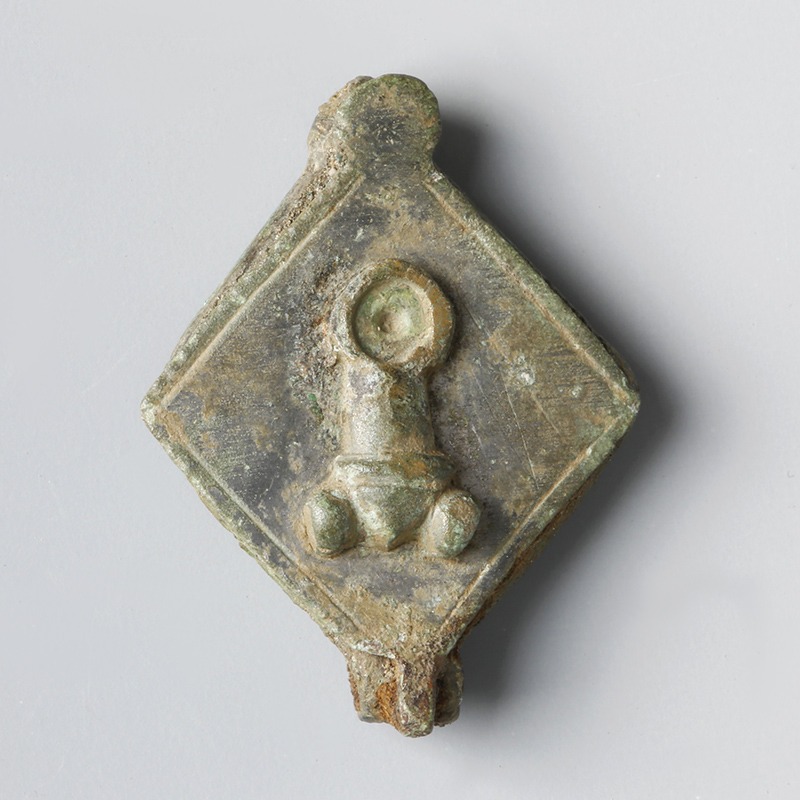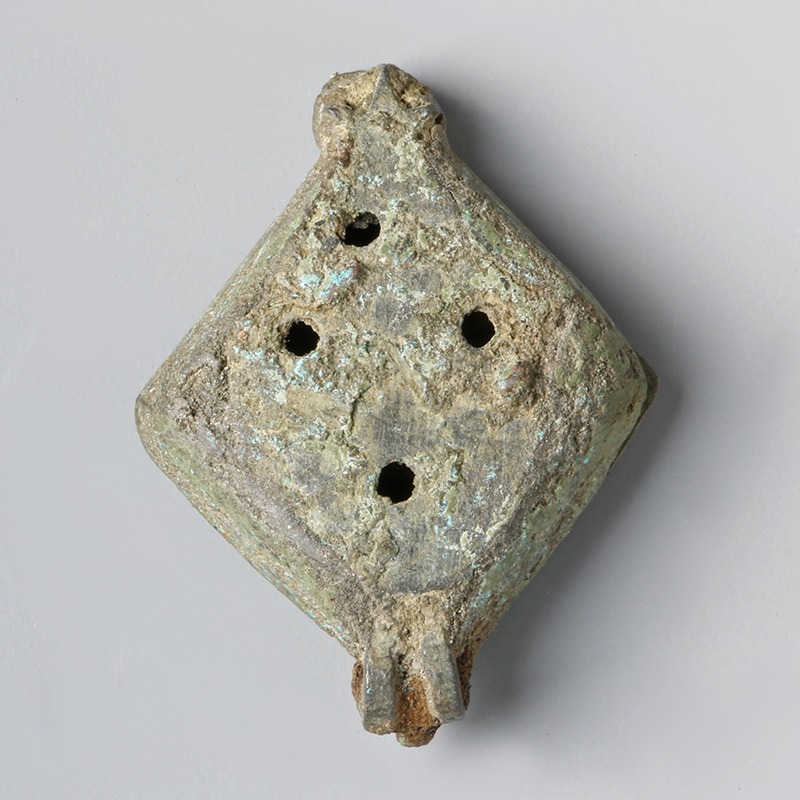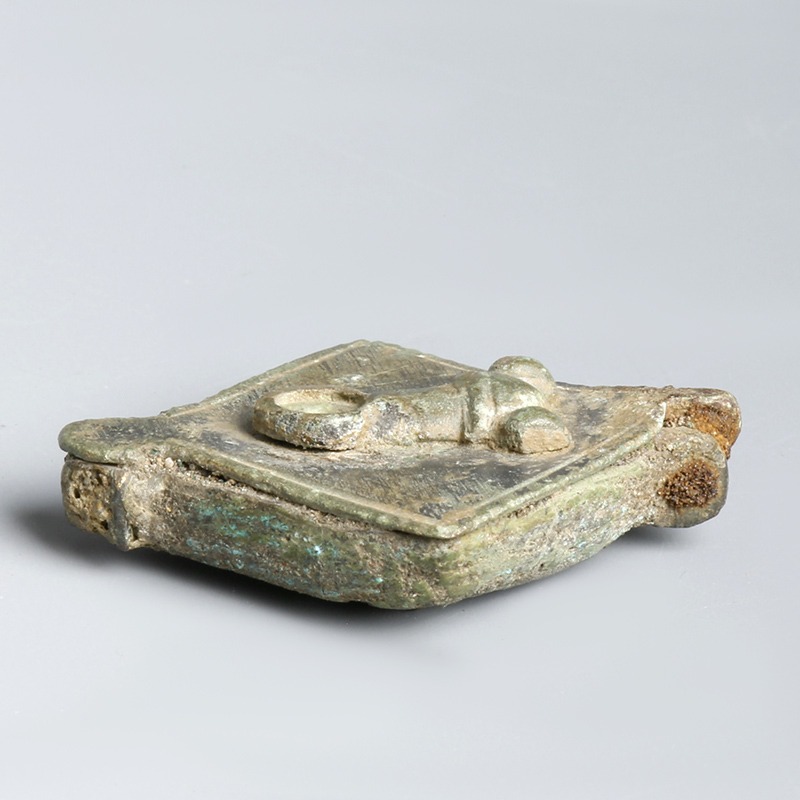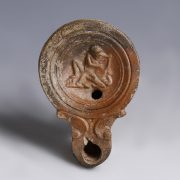Seal boxes were invented by the Romans to secure important information or goods during delivery. It comprised a small bronze box, which was usually attached to a fabric or leather container. The box would be filled with wax; impressed with the sender’s seal, and closed. An embossed phallus was a popular design for ancient Roman seal boxes as it had an apotropaic function. Indeed, phallic emblems are found on a wide range of Roman objects, from amulets to frescoes, from mosaics to lamps, often even adorning jewellery worn by children. The Phallus in Ancient Rome was believed to invoke the protective powers of the god Fascinus, and we often call amulets feating Phallic imagery Fascinum. Thus it is an appropriate design for a seal box which one would have wanted to protect.
For more information on apotropaic amulets, please read our blog post: Apotropaic Art: Amulets and Phallic Pendants in Ancient Cultures.



